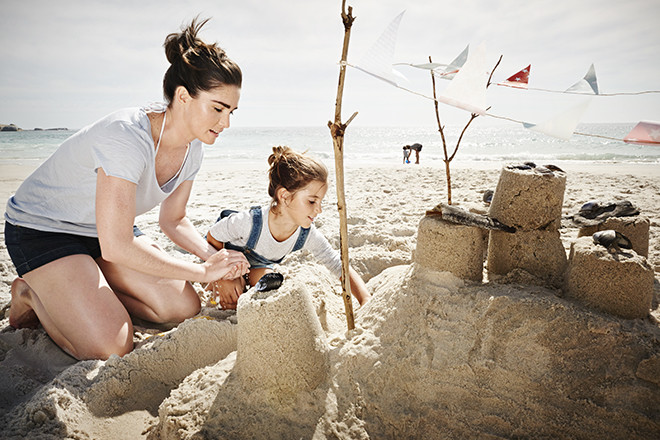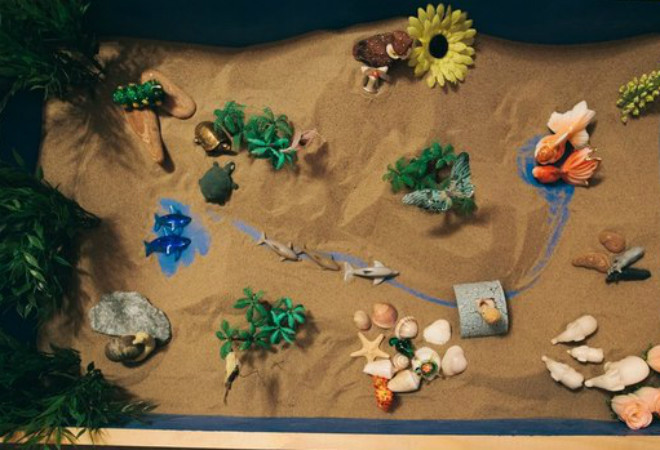 Sand therapy helps to achieve internalHarmonyPhoto: Getty ImagesSand therapy has become widely used due to analytical psychotherapists, followers of Carl Gustav Jung. However, the science fiction writer Herbert Wells first talked about her, who, observing his children, discovered that boys, with the help of playing with small figures, cope with problems that arise in reality, including difficulties in communication. In the sand, these toys were offered to move already the English psychologist Margaret Lovenfeld. The children she worked with liked the new game, because with her help they formed their own world. Sand therapy can help children, but also adults. With its help, you can express what can not translate into words, achieve inner harmony, make the right decision. Sand therapy practices help to establish access to deep levels of the psyche that heals the unconscious, because an adult or a child makes their anxieties and fears tangible, visible. Child sand therapy is especially effective in delaying mental development when a child does not have enough vocabulary to express their anxiety . Also, it is useful in the experience of some traumatic situations when working with psychosomatic disorders. What tools does sand therapy use for children? It is a wooden tray measuring 50x70x8, its inner surface is painted in blue, which during work will symbolize the sky and water. Such a box is filled with half-clean sifted sand, this will be the "horizon line". For studies with sand, you also need a variety of shapes that depict everything that can surround us in reality (cars, houses, trees, people, animals, etc.), as well as some fairy-tale characters.
Sand therapy helps to achieve internalHarmonyPhoto: Getty ImagesSand therapy has become widely used due to analytical psychotherapists, followers of Carl Gustav Jung. However, the science fiction writer Herbert Wells first talked about her, who, observing his children, discovered that boys, with the help of playing with small figures, cope with problems that arise in reality, including difficulties in communication. In the sand, these toys were offered to move already the English psychologist Margaret Lovenfeld. The children she worked with liked the new game, because with her help they formed their own world. Sand therapy can help children, but also adults. With its help, you can express what can not translate into words, achieve inner harmony, make the right decision. Sand therapy practices help to establish access to deep levels of the psyche that heals the unconscious, because an adult or a child makes their anxieties and fears tangible, visible. Child sand therapy is especially effective in delaying mental development when a child does not have enough vocabulary to express their anxiety . Also, it is useful in the experience of some traumatic situations when working with psychosomatic disorders. What tools does sand therapy use for children? It is a wooden tray measuring 50x70x8, its inner surface is painted in blue, which during work will symbolize the sky and water. Such a box is filled with half-clean sifted sand, this will be the "horizon line". For studies with sand, you also need a variety of shapes that depict everything that can surround us in reality (cars, houses, trees, people, animals, etc.), as well as some fairy-tale characters. In the game with sand, shallowSand therapy specialists do not seek to change the child, do not teach him how to behave correctly in a given situation, but simply allow him to be himself, to express what worries him. For example, instead of talking about his feelings, he can throw the figurine, or bury it, or drown it. This is very eloquent. The psychologist does not interpret the game with sand, does not direct the process, but plays the role of an active spectator. It is extremely rare for a child to refuse to play with sand, because this is a natural activity for a child. This method not only stabilizes the psycho-emotional state, but also contributes to the development of fine motor skills of the hands, social orientation. It also helps to unravel the secrets of the inner world of "special" children. How to study on?
In the game with sand, shallowSand therapy specialists do not seek to change the child, do not teach him how to behave correctly in a given situation, but simply allow him to be himself, to express what worries him. For example, instead of talking about his feelings, he can throw the figurine, or bury it, or drown it. This is very eloquent. The psychologist does not interpret the game with sand, does not direct the process, but plays the role of an active spectator. It is extremely rare for a child to refuse to play with sand, because this is a natural activity for a child. This method not only stabilizes the psycho-emotional state, but also contributes to the development of fine motor skills of the hands, social orientation. It also helps to unravel the secrets of the inner world of "special" children. How to study on?

Making Money with Desserts: Success Stories
Yevhen Polishchuk (Fedutinov) instagram: @ evgeniyafedutinovavk.com / janeshomebaking– It all started with baking for relatives and friends. Gradually, she began uploading photos of her baking to Instagram, and orders began to come in. I made my first cake to order on October 13, 2014, and a little earlier I started making macarons and cupcakes. We can say that the business "found me myself", I am very [...]

Soups are cold recipes with photos
Cold cucumber soup with yogurt and lemonSorbet from La Taverna restaurant chef Alexander Zhurkina Photo: Getty Images Ingredients: Yoghurt without additives - 125 gCucumber - 150 gSorbet lemon / lime - 50 gCool shrimp - 24 gFresh ginger - 1 gLime lime - 5 gFresh orange juice - 5 gPetroshka - 1 g pink - 1 gCress salad - […]

barbeque kebab
Pork tenderloin glaze Photos: Dmitry Bayrak / dbstudio Cooking time: 20 minutes + time for pickling. Calorie content: 454 kcal per 1 serving. For 4 servings: 4 pork tenderloin (about 300 g each), 1 onion, 2 cloves of garlic, 1 tsp. lemon peel, 1 tsp. lemon juice, a pinch of ground cumin, coriander and turmeric, 1 tbsp. l vegetable [...]

Pierre Duacan: dietary recipes: Ducane diet
Beetroot Photo: Season'S, Luxury Hotels Representation You will need: · Boiled beets - 60 g · Fresh cucumbers - 20 g · Red radish - 20 g · Green onions - 10 g · Egg - 1 pcs · Mineral drinking water - 200 g · Salt - 1 g Ready: · Boil egg and beetroot. · Grind cucumbers, radishes and a part of beets. Putting everything [...]





